Discover how Danish band Michael Learns To Rock became Asia’s most beloved soft rock group. From timeless ballads to loyal fans, explore their emotional legacy across the region.
Discover how Danish band Michael Learns To Rock became Asia’s most beloved soft rock group. From timeless ballads to loyal fans, explore their emotional legacy across the region.
In the golden age of cassette tapes and FM radio ballads, one band quietly found its way into the hearts of millions—not in their native Denmark, but across Southeast Asia. Michael Learns To Rock (MLTR), a soft rock band formed in 1988, became a surprising cultural touchstone in countries like Indonesia, Malaysia, Thailand, the Philippines, India, and China.
Their music didn’t scream for attention. It whispered to the heart.
Formed by Jascha Richter, Kåre Wanscher, Mikkel Lentz, and Søren Madsen, MLTR began as a university band in Aarhus. Inspired by the likes of Elton John and Supertramp, they honed a sound rooted in soft rock and melodic pop, wrapped in English lyrics and gentle sincerity.
Michael Learns To Rock (MLTR) is a Danish soft rock/pop rock band that achieved enormous popularity in Asia, especially in countries like Indonesia, Malaysia, the Philippines, Thailand, India, and China—despite modest recognition in Europe or the U.S.
Their self-titled debut album was released in 1991. The single “The Actor” quickly gained popularity in Asia, opening doors the band never expected. What followed was a rare phenomenon: a European act that achieved massive success in Asia without mainstream fame in Europe or the U.S.
Formed: 1988 in Aarhus, Denmark
Genres: Soft rock, pop rock, adult contemporary
Languages: All songs are in English
Known for: Emotional love ballads
Career Timeline Highlights:
Early Years (1988–1991): Originally started as a university band. Signed to Medley Records (now part of EMI). Debut album "Michael Learns To Rock" (1991) included hits like “The Actor” — which became a major hit in Asia.
Rise in Asia (1993–1997): Second album "Colours" (1993) and third "Played on Pepper" (1995) solidified their fanbase in Southeast Asia. "25 Minutes", "Sleeping Child", "Out of the Blue", "That’s Why (You Go Away)", and "Paint My Love" became radio and karaoke staples.

Albums “Paint My Love – Greatest Hits” (1996) and “Nothing to Lose” (1997) were massive commercial successes in Asia. Often outperformed global artists in local markets like Indonesia and the Philippines.
2000s–Present
The band continued releasing new music and touring Asia. Later albums include “Blue Night” (2000), “Eternity” (2008), “Still” (2018). Their music remains strong on Spotify, YouTube, and in concert halls across Asia.
The Unexpected Love Affair with Asia
From Jakarta to Bangkok, MLTR’s music exploded. Their ballads spoke a universal language of love, heartbreak, longing, and innocence—delivered in clear English and soothing tones.
Songs like: “25 Minutes” – a story of love lost too late. “That’s Why (You Go Away)” – a bittersweet goodbye. “Sleeping Child” – a message of hope and peace. “Paint My Love” – a tribute to unconditional affection.
These tracks weren’t just hits—they became cultural memories. Played at school graduations, weddings, and karaoke nights, MLTR became part of the emotional fabric of Asian youth in the '90s and 2000s.
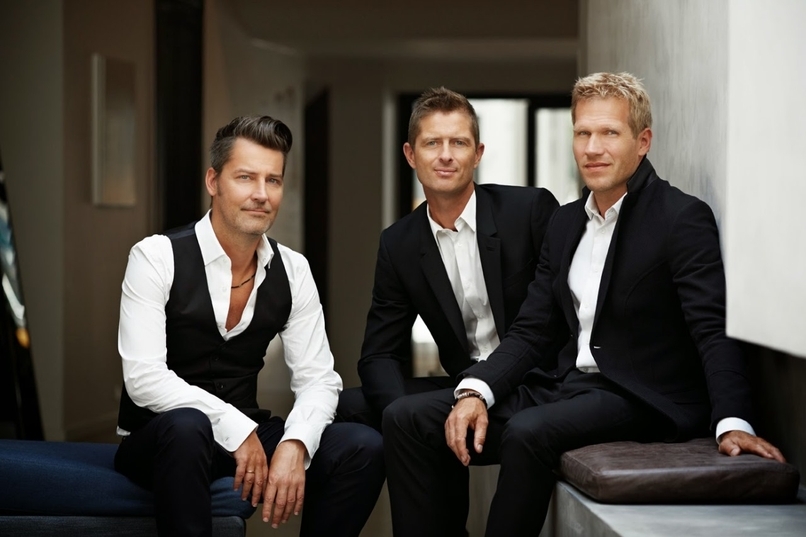
Emotional simplicity – Songs about love, longing, and heartbreak. Clean and universal English lyrics – Easy to understand and sing along. Romantic nostalgia – Their music defined teenage and young adult emotions in the '90s and 2000s. Constant touring and engagement – MLTR frequently visited Asia and built long-lasting fan relationships.
Most Popular Songs in Asia: “25 Minutes”. “That’s Why (You Go Away)”. “Paint My Love”. “Sleeping Child”. “Out of the Blue”. “Breaking My Heart”
The reasons for their success in Asia are as sincere as the band itself: Simple, universal lyrics. Clean melodies easy to sing along to. Themes of love, forgiveness, and nostalgia. A commitment to regularly touring Asia and respecting their fans. Their songs became soundtracks to real lives—a breakup, a crush, a long-distance goodbye.
Achievements
· Over 11 million albums sold worldwide (majority in Asia).
· Considered a top international band in Southeast Asia during the '90s.
· Their greatest hits album sold millions in Asia, making them household names.
Michael Learns To Rock (MLTR) is commonly categorized as retro music, especially in Asia:
Peak Era: 1990s–early 2000s: Their most iconic songs like “25 Minutes,” “Sleeping Child,” “The Actor,” and “That’s Why (You Go Away)” were released between 1991–1997, which places them squarely in the retro era by today's standards (typically 20+ years old).
Strong Nostalgia Factor: MLTR’s music evokes strong sentimental memories for fans who grew up in the '90s. Their tracks are still played in karaoke lounges, weddings, and radio stations focusing on old-school love songs.
Musical Style: Their soft rock, keyboard-heavy ballads, and heartfelt lyrics are consistent with the mellow, romantic style popular in the retro period — unlike the more beat-driven or synth-heavy styles of modern pop.
Legacy Band Status: They’re often grouped with other 90s soft rock/pop legends like Air Supply, Richard Marx, Westlife (early era), and Phil Collins, making them a go-to for retro playlists.
Where MLTR Music Appears:
· Retro radio stations (Asia: Class 95, Lite FM, Retro Hits)
· Spotify playlists like: "90s Soft Rock Classics" "Retro Love Songs"
· Nostalgic YouTube channels and compilations
MLTR is retro music, especially for listeners in their 30s–50s across Asia. They are widely celebrated for their timeless romantic ballads, and their songs are part of the cultural memory of the '90s and early 2000s generation.
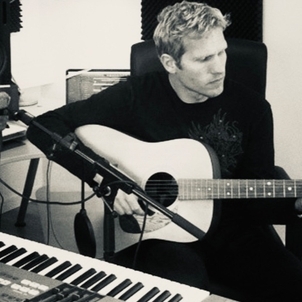
Lead vocalist, keyboardist, and main songwriter. His gentle voice and heartfelt lyrics are the soul of MLTR.
Date of Birth: June 24, 1963. Birthplace: New Hampshire, United States (Though born in the U.S., he was raised and is culturally Danish.)
Jascha grew up in Denmark in a musically inclined family—he learned to play classical instruments like piano and flute from a young age. His early influences include classical music, Elton John, Billy Joel, and Supertramp. He later transitioned from classical training to pop/rock, developing a soft, melodic songwriting style.
Michael Learns To Rock (MLTR): Founding and Rise. Formed MLTR in 1988 in Aarhus, Denmark with fellow students Mikkel Lentz and Kåre Wanscher. Richter quickly became the creative engine of the band—writing or co-writing most of their major hits. His voice, often compared to other soft rock vocalists like Richard Marx, became a defining feature of the band’s emotional appeal.
Some of MLTR’s biggest hits written or co-written by Jascha Richter: “The Actor” (1991). “Sleeping Child” (1993). “25 Minutes” (1993). “Paint My Love” (1995). “That’s Why (You Go Away)” (1995). “Breaking My Heart” (1997)
These songs cemented MLTR's legacy in Asia, and Jascha became one of the most successful Western songwriters in the Asian music market.
Solo Debut Album: "Planet Blue" (2002) A pop-oriented solo project exploring love and introspection, with a slightly more experimental edge compared to MLTR.
Second Album: "Where I Belong" (2006) Continued in the soft rock tradition, showcasing his lyrical themes of loneliness, relationships, and belonging.
While his solo work received limited international exposure, it resonated with loyal MLTR fans.
Jascha’s songwriting is especially admired in countries like Indonesia, Thailand, Malaysia, the Philippines, and India. His simple yet deeply emotional English lyrics are accessible to non-native speakers, contributing to MLTR’s decades-long appeal.
Musical Style: Romantic soft rock, melodic ballads, adult contemporary. Instruments: Piano/keyboard (primary), vocals. Lyrical Themes: Love, heartbreak, longing, hope, nostalgia.
Jascha Richter is not just the frontman of MLTR—he is the heart of its emotional and lyrical identity. With over 11 million albums sold, largely due to his writing, he stands as one of the most commercially successful Danish songwriters of all time in Asia. Still active today, he continues to tour and release music with MLTR.
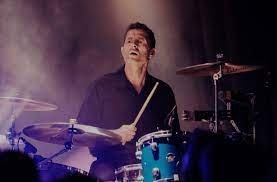
Drummer and co-founder, known for his clean rhythms and steady presence in the band’s leadership.
Date of Birth: June 14, 1969. Birthplace: Aarhus, Denmark
Kåre grew up in Denmark and developed a strong interest in music, particularly percussion, during his teenage years. He was influenced by classic rock and jazz drummers and pursued music alongside his university studies. In the late 1980s, he met Jascha Richter and Mikkel Lentz while studying at Aarhus University, leading to the formation of Michael Learns To Rock in 1988.
Kåre is the drummer and co-founder of MLTR. He has remained with the band throughout its entire history, from its early days as a university band to becoming an international success. While Jascha Richter is the main songwriter and voice of MLTR, Kåre has been crucial to the band's rhythm, cohesion, and long-term stability.
Kåre Wanscher plays a key role in managing the band’s logistics, touring, and business decisions. In many interviews, it’s clear he handles the business side, while Jascha leads the creative. Known as the “quiet force” in the band, he’s been a stabilizing figure during challenging times, such as lineup changes (e.g., the departure of bassist Søren Madsen in 2000).
Kåre is highly appreciated by fans across Asia. His calm demeanor and humble interactions have made him popular during meet-and-greets, interviews, and live shows. He has frequently spoken about the band's gratitude for their Asian fan base and has worked closely with local promoters in Asia to ensure MLTR’s successful tours.
Drumming Style: Clean, soft, and supportive—never overpowering the vocals or melody. Fits perfectly with MLTR’s gentle, romantic ballads. He avoids flashy solos and instead focuses on emotional timing and smooth transitions, ideal for soft rock.
Kåre has often said that “simplicity is the beauty” of MLTR’s music. He believes in creating timeless songs that can be appreciated by everyone, not just music critics or trend-followers.
Kåre Wanscher is not just a drummer — he’s a pillar of MLTR’s longevity. Together with Jascha Richter and Mikkel Lentz, Kåre has helped MLTR: Sell over 11 million albums. Perform hundreds of concerts across Asia. Maintain a loyal fanbase for more than three decades.
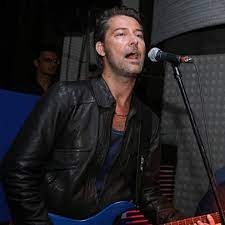
Guitarist and sound engineer, whose melodic guitar work shaped the band’s distinctive sound.
Date of Birth: December 25, 1968. Birthplace: Aarhus, Denmark
Mikkel grew up in Aarhus and developed a passion for guitar and songwriting as a teenager. He was heavily influenced by classic rock, melodic pop, and soft rock styles. While attending Aarhus University in the late 1980s, he met Jascha Richter and Kåre Wanscher, with whom he co-founded MLTR in 1988.
As MLTR’s lead guitarist, Mikkel has crafted the band’s signature clean, melodic guitar work that blends seamlessly with Jascha’s vocals and piano. His guitar style is subtle yet memorable—designed to support the emotion-driven tone of the band’s music rather than dominate it.
In addition to performing, Mikkel is known for his behind-the-scenes contributions: Sound engineering. Studio production. Mixing and mastering. After the band became independent of major labels, Mikkel played a key role in recording and producing MLTR’s later albums, such as "Eternity" (2008) and "Still" (2018).
Playing Style: Smooth, emotional, and clean—never flashy, always in service of the song. Uses a combination of acoustic and electric guitars, often layered for a fuller sound. Influenced by guitarists who focus on melody and atmosphere over technical showmanship.
Mikkel is especially popular among fans in Indonesia, Thailand, the Philippines, and China, often praised for his humble personality and interactions during concerts. His calm stage presence and connection with the audience are a perfect complement to MLTR’s romantic vibe.
Co-created many of MLTR’s signature arrangements. Helped develop the overall audio aesthetic of MLTR post-1997 when they gained more creative control over their music. Actively involved in the revival of the band’s sound in the 2000s, adapting to digital production and new platforms like Spotify and YouTube.
Mikkel Lentz is the technical heart and musical polish behind MLTR’s success. With over 35 years of consistent contribution, he has helped keep the band relevant across generations, particularly in Asia. His dedication to quality sound and gentle guitar arrangements ensures that MLTR’s ballads remain timeless.
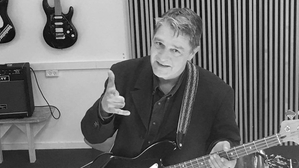
Original bassist who left in 2000 to pursue a solo classical guitar career.
Date of Birth: May 30, 1967. Birthplace: Horsens, Denmark
Søren developed an interest in music and guitar at a young age, later shifting to bass guitar as his primary instrument. He was also known for his skills on the classical and acoustic guitar—a passion he pursued more fully after leaving MLTR. He studied at the Royal Academy of Music in Aarhus, which contributed to his technical precision and musicality.
Søren Madsen was the original bassist and a founding member of MLTR when the band was formed in 1988. He performed on the band’s first four studio albums, during their most commercially successful period: Michael Learns To Rock (1991). Colours (1993). Played on Pepper (1995). Nothing to Lose (1997)
Known for his solid, groove-driven bass lines that supported MLTR’s smooth pop/rock ballads. He also contributed vocals and harmonies on a few tracks, and occasionally participated in songwriting and arrangement discussions. His presence helped anchor the band’s live performances in the 1990s, especially during their first major tours across Asia.
In 1999, Søren Madsen left MLTR to pursue a solo career and explore more personal and classical music projects. The band continued as a trio after his departure and adapted their sound accordingly.
After leaving MLTR, Søren focused on a solo guitar career, especially in classical and acoustic music. Notable Works: "Spanish Nights" (2004): A solo album featuring classical guitar pieces with Spanish and Latin influence. YouTube Guitar Performances: Søren gained recognition for his acoustic guitar covers of songs like: “Bohemian Rhapsody” (Queen). “November Rain” (Guns N’ Roses). “My Heart Will Go On” (Céline Dion). “Imagine” (John Lennon)
These fingerstyle arrangements have earned him a loyal following among guitar enthusiasts globally. Søren transitioned from soft rock bass to fingerstyle acoustic and classical guitar. His style is intricate, melodic, and deeply expressive—focused on reinterpretations of famous songs for solo guitar.
Søren Madsen remains a respected figure in MLTR’s history. Though no longer with the band, his contributions to their core sound during the 1990s helped cement MLTR as one of Asia’s most beloved foreign acts. His solo career showcases his versatility and depth as a musician beyond pop music.
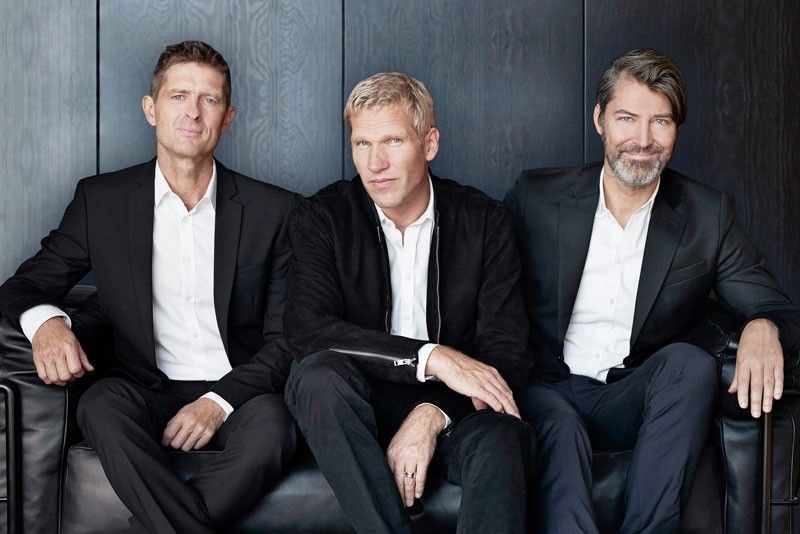
Legacy Beyond the Charts
While the Western charts barely noticed, MLTR went on to sell over 11 million albums, mostly in Asia. Their 1996 greatest hits album sold in the millions and solidified their place in Asian pop culture.
They’re still touring to this day—performing for thousands in Jakarta, Kuala Lumpur, Bangkok, and beyond. Fans spanning three generations sing along to every word, proving that the emotional power of music doesn’t age.
A Quiet Legacy That Speaks Volumes
Michael Learns To Rock may never have dominated Western pop culture, but in Asia, they were—and still are—icons. In a world of flashy trends, they chose sincerity. And in return, they gained decades of loyal listeners who still find comfort in their music.